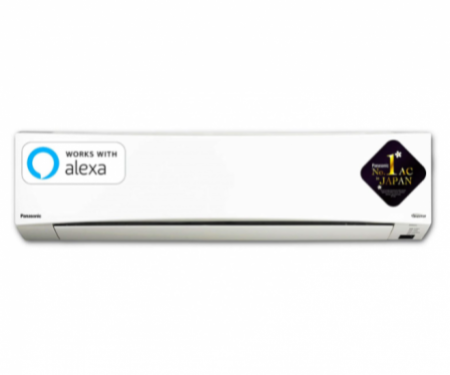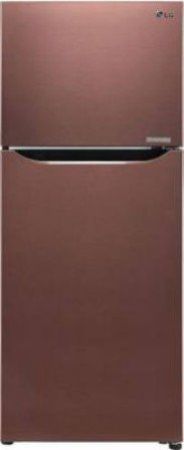HW 9 V BATTERY
HW 9V Battery Specifications (General Overview) Nominal Voltage: 9V (this is the standard output voltage for most 9V batteries, regardless of chemistry). Battery Chemistry: Most common types are Alkaline, but some models may also be Lithium, Nickel-Cadmium (NiCd), or Nickel-Metal Hydride (NiMH) (for rechargeable types). Capacity:
₹ 25.00
₹30
(Inclusive of all taxes)
-

No Warranty
-

COD Not Avilable
-

Non Returnable
-

Non cancelable
About this item
HW 9V Battery Specifications (General Overview)
-
Nominal Voltage:
- 9V (this is the standard output voltage for most 9V batteries, regardless of chemistry).
-
Battery Chemistry:
- Most common types are Alkaline, but some models may also be Lithium, Nickel-Cadmium (NiCd), or Nickel-Metal Hydride (NiMH) (for rechargeable types).
-
Capacity:
- Alkaline 9V Battery: Typically 400–600 mAh.
- Lithium 9V Battery: Typically 1200–1500 mAh (more capacity and longer lifespan).
-
Size & Dimensions:
- Height: ~48.5 mm (1.91 inches)
- Width: ~26.5 mm (1.04 inches)
- Depth: ~17.5 mm (0.69 inches)
-
Weight:
- Alkaline: Approx. 45–50 grams.
- Lithium: Approx. 40–45 grams.
-
Temperature Range:
- Standard range: -20°C to 60°C (-4°F to 140°F) for most types.
-
Shelf Life:
- Alkaline 9V Batteries: Can last up to 5–7 years on the shelf.
- Lithium 9V Batteries: Can last up to 10+ years in storage.
-
Discharge Rate:
- Alkaline: Moderate rate of discharge, ideal for low to moderate-drain devices.
- Lithium: Lower discharge rate, better for high-drain or long-term use.
-
Terminals/Connectors:
- Snap terminals (the standard "clip" connection for most devices).
Common Uses for HW 9V Battery (and similar types):
-
Smoke Detectors:
- A 9V battery is commonly used in smoke detectors due to its reliability and long shelf life.
-
Toys:
- Many electronic toys, particularly those requiring a portable, compact power source, use 9V batteries.
-
Musical Instruments:
- Common in electronic musical devices, such as guitar pedals, keyboards, and other small electronics.
-
Medical Equipment:
- Hearing aids, pulse oximeters, and some portable medical devices may rely on 9V batteries for power.
-
Testing Equipment:
- Many handheld electronic testers and multimeters use 9V batteries.
-
Remote Controls:
- Some remotes, especially for older models or specialized devices, use 9V batteries.
-
Flashlights:
- Some flashlights, especially those designed for compact or emergency use, are powered by 9V batteries.
-
Prototyping and DIY Electronics:
- Hobbyists and engineers often use 9V batteries in electronics projects, especially in breadboards for low-power circuits.
-
Portable Radios and Communication Devices:
- Certain portable radios and walkie-talkies require 9V batteries for operation.
-
Other Small Devices:
- Devices like electronic timers, alarm systems, and LED lights often rely on 9V batteries.
Advantages:
- Compact Size: Easily fits into smaller devices.
- Convenient: Widely available, easy to replace, and relatively inexpensive.
- Long Shelf Life: Particularly in lithium variants.
- Reliable Power Source: Suitable for low-power applications or devices that do not require frequent battery changes.
Disadvantages:
- Lower Energy Capacity: Compared to larger battery sizes (like AA or AAA), the 9V battery has a relatively lower capacity.
- Drain Rate: Higher-drain devices can quickly deplete the 9V battery's charge.
HW 9V Battery Specifications (General Overview)
-
Nominal Voltage:
- 9V (this is the standard output voltage for most 9V batteries, regardless of chemistry).
-
Battery Chemistry:
- Most common types are Alkaline, but some models may also be Lithium, Nickel-Cadmium (NiCd), or Nickel-Metal Hydride (NiMH) (for rechargeable types).
-
Capacity:
- Alkaline 9V Battery: Typically 400–600 mAh.
- Lithium 9V Battery: Typically 1200–1500 mAh (more capacity and longer lifespan).
-
Size & Dimensions:
- Height: ~48.5 mm (1.91 inches)
- Width: ~26.5 mm (1.04 inches)
- Depth: ~17.5 mm (0.69 inches)
-
Weight:
- Alkaline: Approx. 45–50 grams.
- Lithium: Approx. 40–45 grams.
-
Temperature Range:
- Standard range: -20°C to 60°C (-4°F to 140°F) for most types.
-
Shelf Life:
- Alkaline 9V Batteries: Can last up to 5–7 years on the shelf.
- Lithium 9V Batteries: Can last up to 10+ years in storage.
-
Discharge Rate:
- Alkaline: Moderate rate of discharge, ideal for low to moderate-drain devices.
- Lithium: Lower discharge rate, better for high-drain or long-term use.
-
Terminals/Connectors:
- Snap terminals (the standard "clip" connection for most devices).
Common Uses for HW 9V Battery (and similar types):
-
Smoke Detectors:
- A 9V battery is commonly used in smoke detectors due to its reliability and long shelf life.
-
Toys:
- Many electronic toys, particularly those requiring a portable, compact power source, use 9V batteries.
-
Musical Instruments:
- Common in electronic musical devices, such as guitar pedals, keyboards, and other small electronics.
-
Medical Equipment:
- Hearing aids, pulse oximeters, and some portable medical devices may rely on 9V batteries for power.
-
Testing Equipment:
- Many handheld electronic testers and multimeters use 9V batteries.
-
Remote Controls:
- Some remotes, especially for older models or specialized devices, use 9V batteries.
-
Flashlights:
- Some flashlights, especially those designed for compact or emergency use, are powered by 9V batteries.
-
Prototyping and DIY Electronics:
- Hobbyists and engineers often use 9V batteries in electronics projects, especially in breadboards for low-power circuits.
-
Portable Radios and Communication Devices:
- Certain portable radios and walkie-talkies require 9V batteries for operation.
-
Other Small Devices:
- Devices like electronic timers, alarm systems, and LED lights often rely on 9V batteries.
Advantages:
- Compact Size: Easily fits into smaller devices.
- Convenient: Widely available, easy to replace, and relatively inexpensive.
- Long Shelf Life: Particularly in lithium variants.
- Reliable Power Source: Suitable for low-power applications or devices that do not require frequent battery changes.
Disadvantages:
- Lower Energy Capacity: Compared to larger battery sizes (like AA or AAA), the 9V battery has a relatively lower capacity.
- Drain Rate: Higher-drain devices can quickly deplete the 9V battery's charge.
0 Review Of Product HW 9 V BATTERY














